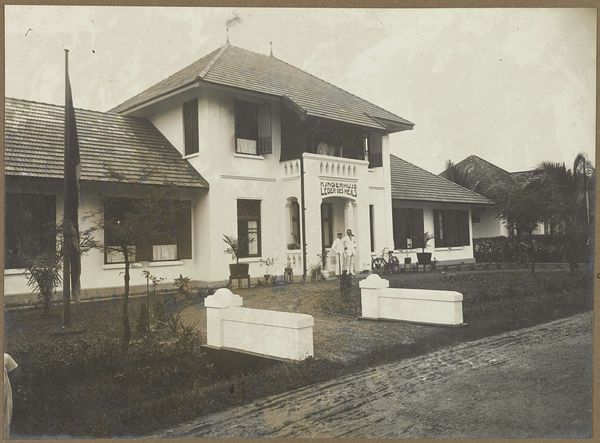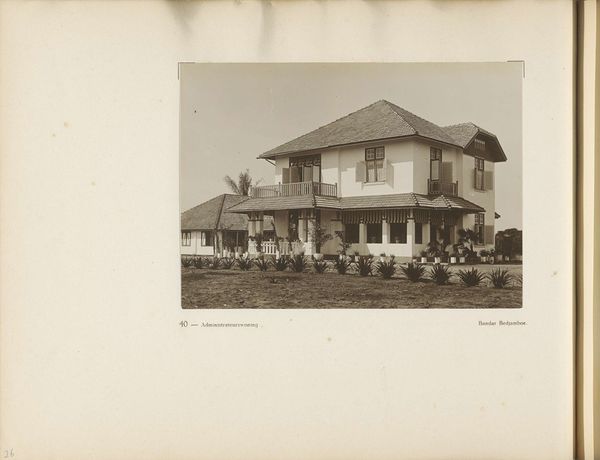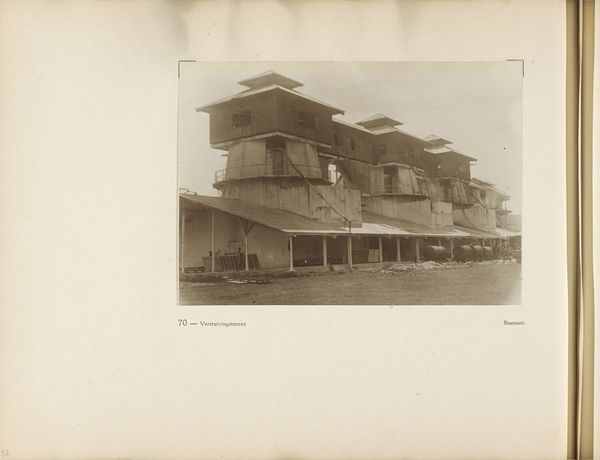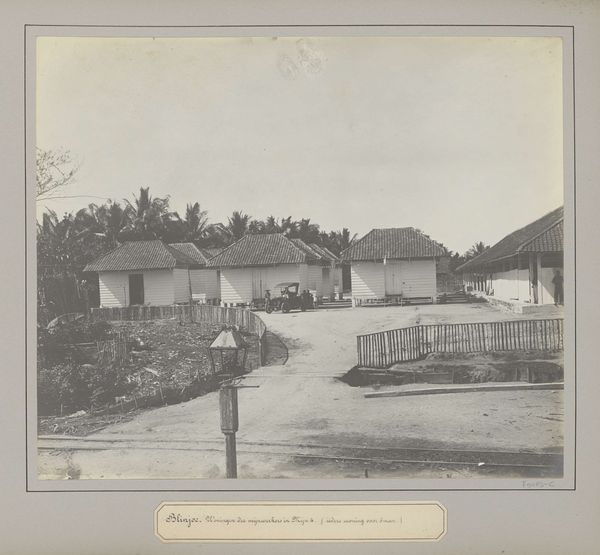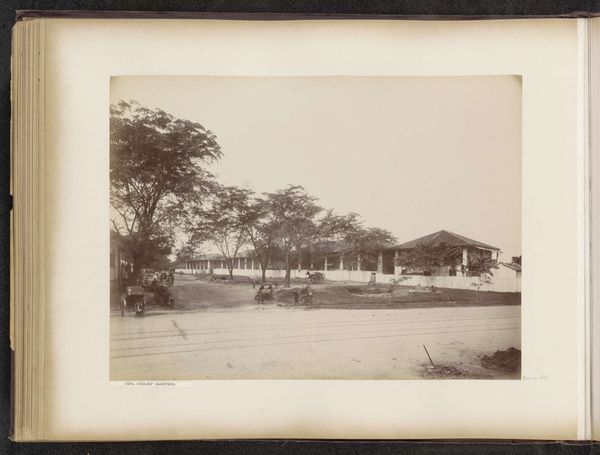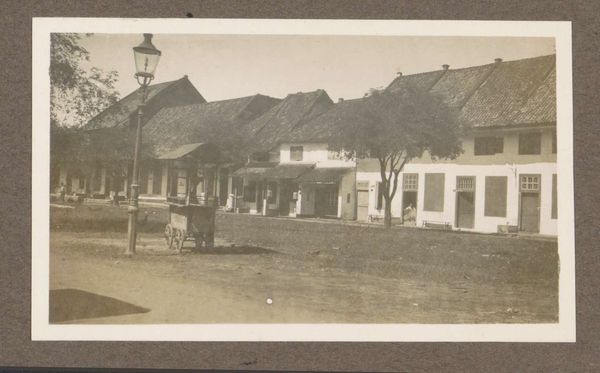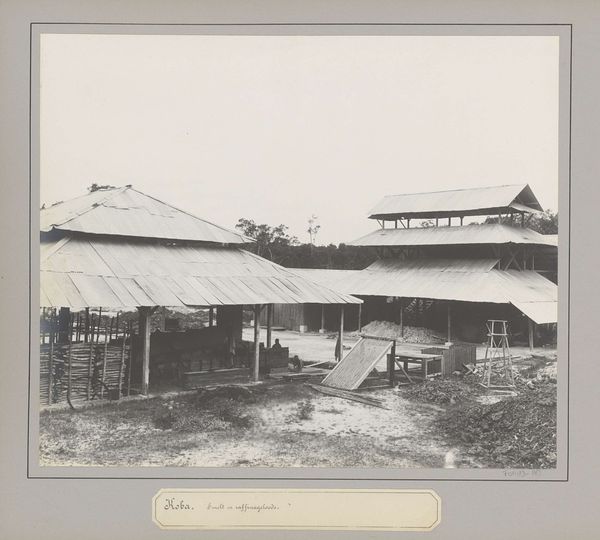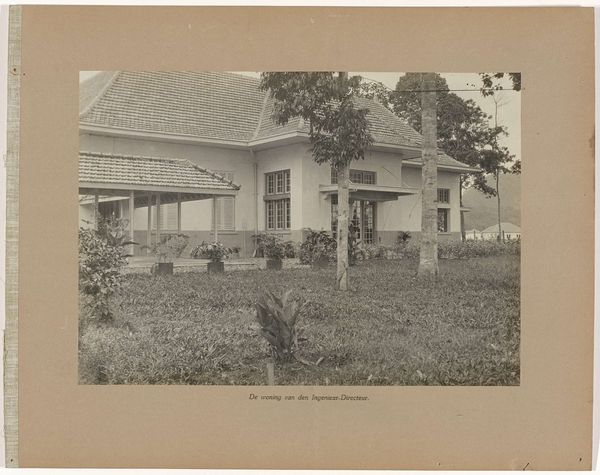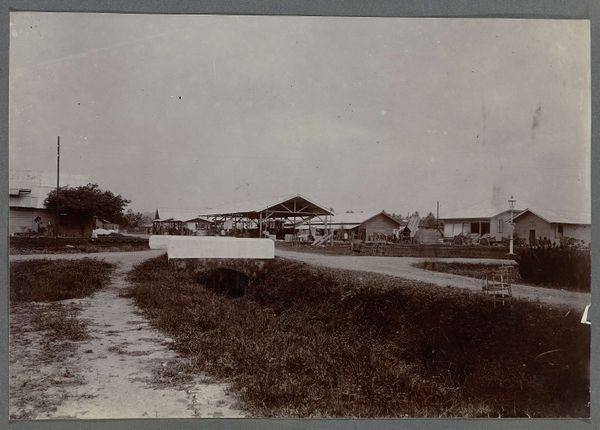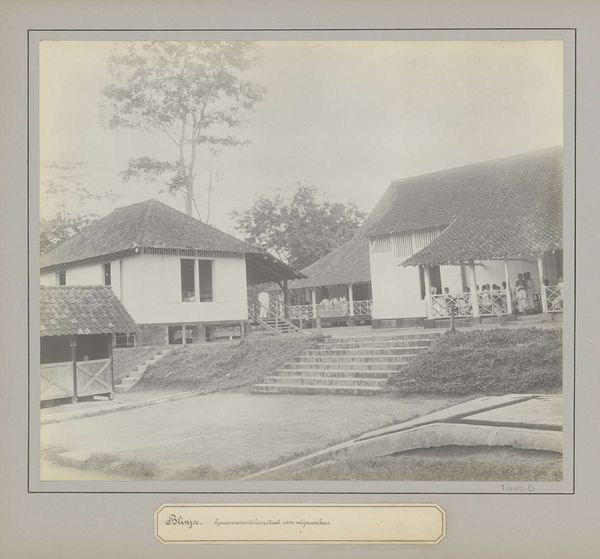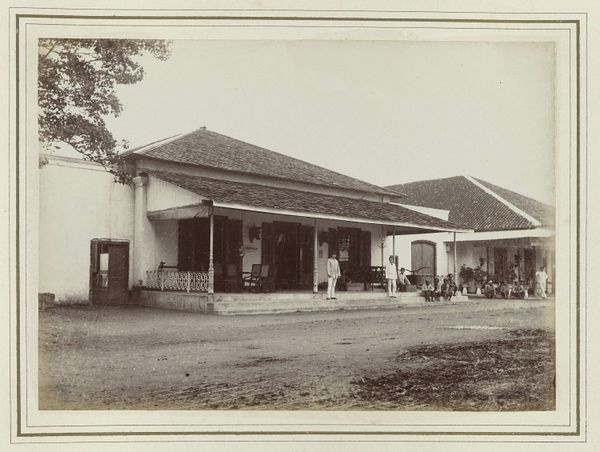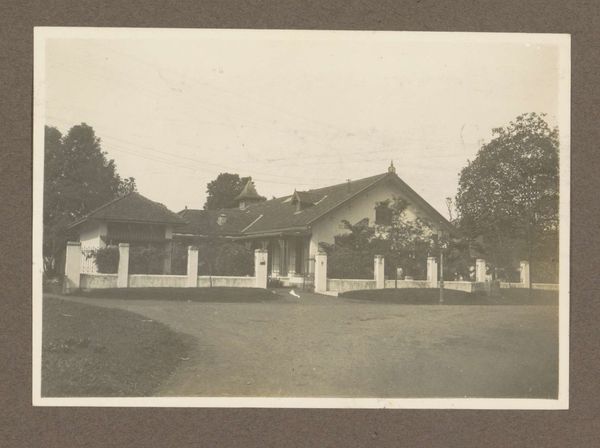
Pagina 42 van fotoboek van de Algemeene Vereeniging van Rubberplanters ter Oostkust van Sumatra (A.V.R.O.S.) c. 1924 - 1925
0:00
0:00
jwmeyster
Rijksmuseum
photography, gelatin-silver-print
#
landscape
#
photography
#
orientalism
#
gelatin-silver-print
Dimensions: height 240 mm, width 310 mm
Copyright: Rijks Museum: Open Domain
Curator: So, this gelatin-silver print, "Pagina 42 van fotoboek van de Algemeene Vereeniging van Rubberplanters ter Oostkust van Sumatra (A.V.R.O.S.)", was created circa 1924-1925 by J.W. Meyster. It’s currently held in the Rijksmuseum collection. Editor: It strikes me as almost eerily calm, at first glance. A very still, almost staged photograph. It’s this ordered row of houses that gives me that feeling. And that procession...where are they going? Curator: Well, it documents worker housing on a Sumatran rubber plantation. These compounds, provided by the A.V.R.O.S., which was the General Association of Rubber Planters on the East Coast of Sumatra, served a very specific function within a complex system of colonial labor. Editor: Ah, okay, that reframes everything, doesn't it? What seemed serene now feels...controlled. I’m curious about the photographer's intent, capturing it this way, so deliberately. There's this almost…sterile order to it all. Even the way people are posed on their porches, it's fascinating. Curator: Right, these images weren't simply records. They were actively constructing and reinforcing the colonial narrative – portraying these plantations as well-organized, beneficial enterprises. Editor: It’s a very careful curation of the truth then. Seeing this image through today's lens is difficult knowing what we now understand about colonial labor and power dynamics, yet also seeing it as an artist attempts to capture their own perceived beauty within a complicated world. Curator: Precisely. Understanding the function of these images within their historical context challenges us to reconsider what seems ordinary in them. We have to look past the superficial "landscape" style and see its deeply embedded politics. Editor: A picture of what may be beauty or peace may not reflect an accepted history of what truly may have been at its very beginnings. Art challenges us and makes us think of more than meets the eye at times. This certainly offers pause. Curator: Exactly, this page encapsulates many of the visual strategies used to normalize and even romanticize the colonial project. It urges us to read carefully, between the lines. Editor: It’s left me considering how images, especially those seemingly benign, can perpetuate systems of power. Something to sit with, I think.
Comments
No comments
Be the first to comment and join the conversation on the ultimate creative platform.
